Development of DERMS for Remote Monitoring Control of Smart Inverters for Solar Power Generation
- Takuya Miyamoto
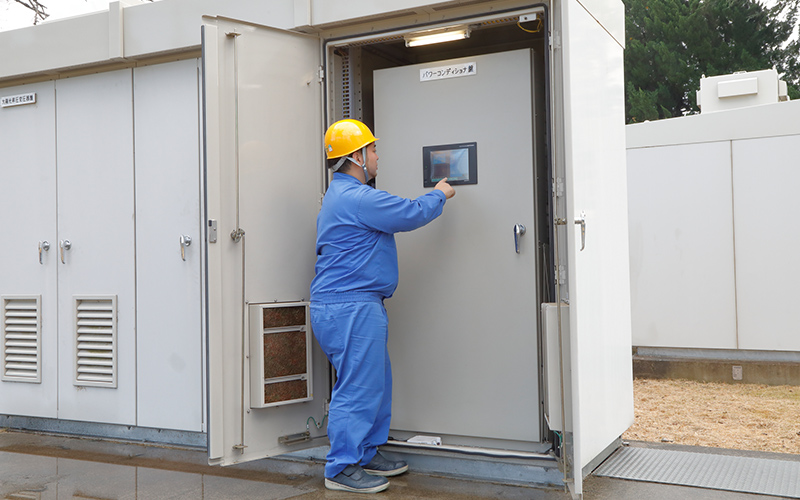
DER (Distributed Energy Source) is a small-scale power source that generates and supplies electricity by installing solar panels near where electricity is used, such as houses and commercial buildings.
TAKAOKA TOKO is developing a smart power conditioner for solar power generation that equips DER with a smart inverter that has support functions such as voltage control and frequency control for stable power supply. We are also working on the development of DERMS (Distribution Energy Resource Management System) that can perform the centralized monitoring of them from a remote location.
Solar panels generate more power than necessary on a sunny day, but they have almost no power generation capacity when the sky is cloudy or at night. When generating more power than necessary, it is necessary to control the amount of electricity, and if the amount of electricity is excessive, it is necessary to prepare for rain, cloudy weather, and use of electricity at night.
DERMS performs the centralized management of the solar power generation facilities in each region, enabling efficient use of electricity, such as redistributing excessive power, if generated somewhere, to places where it is needed, or storing power. In addition, since it can perform centralized management from a remote location, it also leads to labor saving in operation.
Technology
In the United States, the introduction of smart inverters and DERMS to DERs is progressing under the background of the expansion of renewable energy, mainly solar power generation.
In response to this, We have been standardizing and tested its specifications for introduction in Japan at the New Energy and Industrial Technology Development Organization (NEDO), a national research and development agency.
TAKAOKA TOKO has worked to develop DERMS of the communication-specifications conforming to IEC61850 through demonstration projects in NEDO and by implementing smart inverter functions in smart power conditioners (smart PCS) for its own solar power generation equipment installed at the Oyama office.
This is an ongoing expected effort to achieve both the expansion of the introduction of renewable energy and the stable supply of electricity.

Profile
-
 Takuya MiyamotoGX Solution Business Division
Takuya MiyamotoGX Solution Business Division
Future Grid Design Office
Future Grid Design Group
Chief
Development of a control system that efficiently operates solar power generation systems
Miyamoto:From around 2010, the number of solar panels installed has increased rapidly. However, solar panels generate electricity when there is sunlight, but they generate almost no electricity when the sun is shaded. Because of its highly variable characteristics, it is very difficult to balance power generation with power demand.
Initially, solar panels were operated without any special control, but excessive output on sunny days caused problems such as equipment damage.
Therefore, when excessive power generation was expected, it was necessary for the chief electrical engineer to go to the power generation equipment in advance and take measures such as curbing the output or stopping the power generation itself.
However, because of the need for specialized engineers, it was pointed out that there was an increase in costs related to operation and management. It is very inefficient to suppress or stop something that is generating power.
Therefore, it was necessary to create a monitoring system that can be finely controlled according to the region, season, system configuration, etc., including solar panels and storage batteries. In addition, if it can be monitored from a remote location through a network, it is possible to save labor for operation and management, which leads to cost reduction.

Realization of remote location monitoring with communication specifications that conform to the International Standard IEC61850
Miyamoto:We have been conducting demonstration tests of smart inverters at NEDO as part of a national project. TAKAOKA TOKO is also participating in the project as a manufacturer of power distribution devices, and we are considering how to perform control to achieve a stable supply of solar power generation.
When trying to decide on a communication method, we decided to comply with the International Standard IEC61850. Since the specifications are open to the public, the cost invested in the development of devices can be reduced, leading to fair market competition.
We had a hard time reading English specifications because of unprecedented event within the company. However, we prepared an actual device, tested it, and managed to achieve the target with the cooperation of the members of the company.
The government's goal is to reduce greenhouse gas emissions by 46% from the FY2013 level by 2030. In response to this, the Ministry of Economy, Trade and Industry has formulated the line of policy of energy “Basic Plan for Energy Policy” to reduce the share of renewable energy from 36% to 38%. Solar power generation plays a major role in achieving the target.
However, there are many parts that cannot be handled by the conventional approach of supplying electricity to meet demand. In order to expand the use of renewable energy, such as solar power generation, which is influenced by natural conditions such as the weather, it will be important to manage the use of energy with an awareness of the power demand balance. Therefore, this kind of initiative must be positioned as important.

Toward an era in which regional energy sources are integrated and managed
-"Virtual Power Plant (VPP)" currently attracting attention-
Miyamoto:Nowadays, "Virtual Power Plant (VPP)" is attracting attention. This mechanism indicates that by integrating and managing energy resources such as solar panels, storage batteries, and electric vehicle batteries installed in certain areas, we are able to supply excess electricity to areas where it is needed or to store electricity if it is not necessary.
It is called a "virtual power plant" because it supports local electricity through advanced energy management that utilizes IoT, and we believe that our current initiative is part of that.
If solar panels can be successfully controlled and used at full capacity, the potential for renewable energy will expand even further.
The problem is that fuel cell vehicles use a large amount of electricity to produce fuel. However, solutions such as the use of excess electricity to produce fuel are under consideration. In this way, fuel cell vehicles will have a higher degree of contribution to the decarbonization society.

Conclusion -Creating a business model to spread and expand renewable energy-
Technologies for spreading and expanding the use of renewable energy are progressing steadily.
One of the major issues now may be how to commercialize solar power generation control and VPP. Without a revenue-generating business model, the market will not be spread.
In the future, we will also focus on commercializing efforts to spread renewable energy.
Latest articles
-
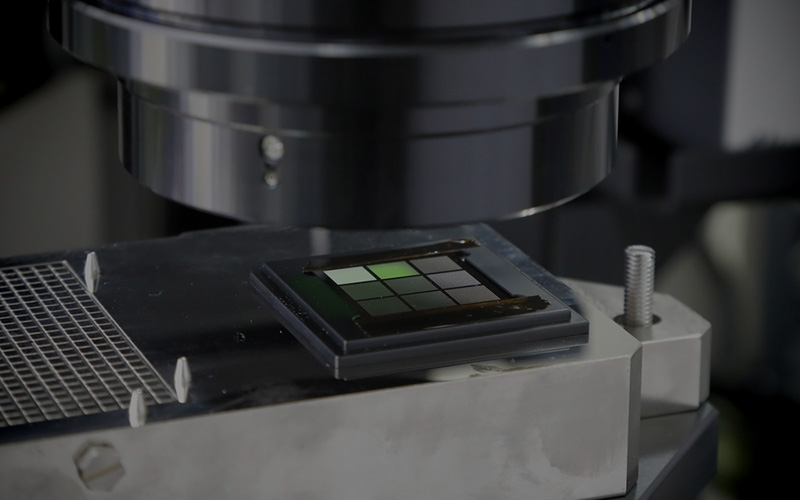 interviewThe confocal surface shape measurement system for semiconductor reliabilityIt is no exaggeration to say that semiconductors are used in everything supporting our lives and industry in modern society. Examples include smartphones, home appliances, and industrial products in various fields.
interviewThe confocal surface shape measurement system for semiconductor reliabilityIt is no exaggeration to say that semiconductors are used in everything supporting our lives and industry in modern society. Examples include smartphones, home appliances, and industrial products in various fields. -
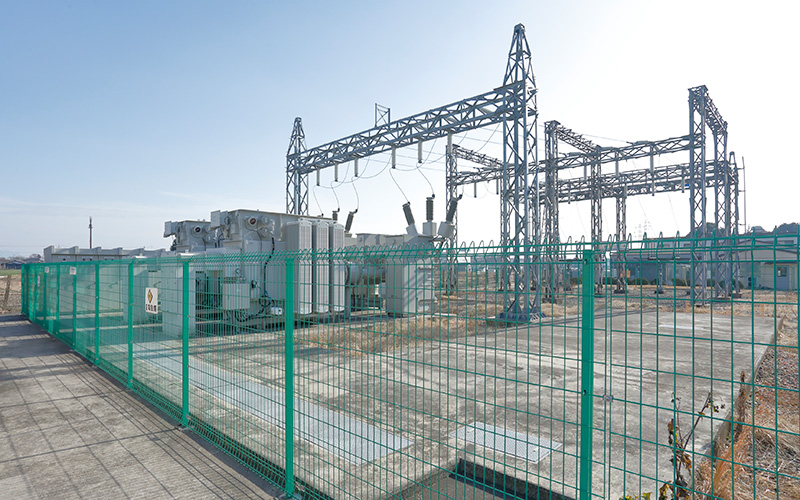 interviewImplementation of a Sensor Solution for Substation DigitalizationGlobal energy prices remain at high levels. The presumed cause is the imbalance between energy supply and demand due to recovery in economic activity from the spread of COVID-19, unseasonable weather, disasters, Russia's invasion of Ukraine, and other factors. The soaring energy prices naturally have an impact on the electricity sector, putting not only ordinary households but also electricity suppliers, or electric power companies, in a difficult situation. Power companies are being forced to cut costs to keep power prices down.
interviewImplementation of a Sensor Solution for Substation DigitalizationGlobal energy prices remain at high levels. The presumed cause is the imbalance between energy supply and demand due to recovery in economic activity from the spread of COVID-19, unseasonable weather, disasters, Russia's invasion of Ukraine, and other factors. The soaring energy prices naturally have an impact on the electricity sector, putting not only ordinary households but also electricity suppliers, or electric power companies, in a difficult situation. Power companies are being forced to cut costs to keep power prices down. -
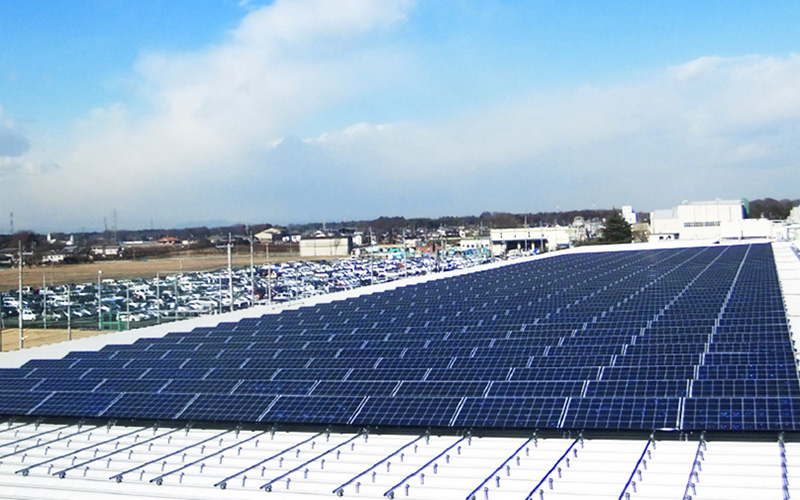 interviewDevelopment of Techniques for Solar Power Generation Prediction Using AIIn order to promote carbon neutrality, the use of renewable energy that doesn't emit CO2 is expanding.Among renewable energy resources, solar power generation is an important one which will continue to grow in popularity.
interviewDevelopment of Techniques for Solar Power Generation Prediction Using AIIn order to promote carbon neutrality, the use of renewable energy that doesn't emit CO2 is expanding.Among renewable energy resources, solar power generation is an important one which will continue to grow in popularity. -
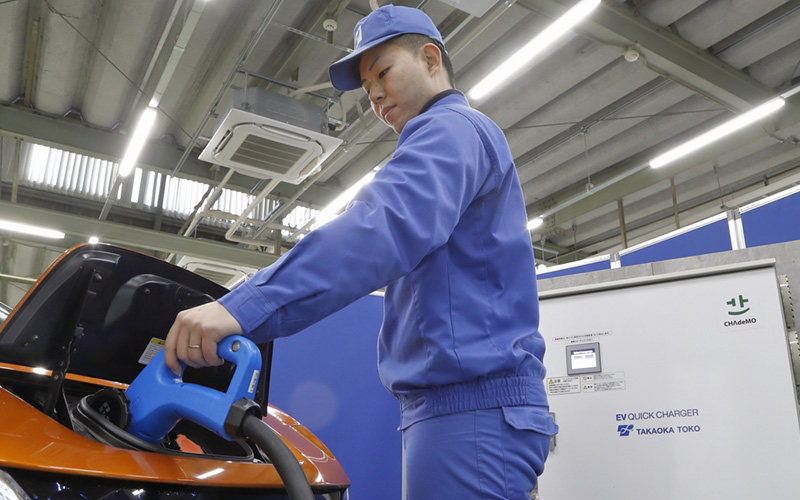 interviewDevelopment of Medium-Capacity Quick Charger for Electric VehiclesIn anticipation of expansion of EV charging infrastructure in Japan, where the EV shift is accelerating, we worked on the development of the “medium-capacity quick charger (B11)” as a charger that meets the needs for intermediate chargers between normal chargers and quick chargers. This article introduces the features of the product, ingenuity in the development process, and our future vision.
interviewDevelopment of Medium-Capacity Quick Charger for Electric VehiclesIn anticipation of expansion of EV charging infrastructure in Japan, where the EV shift is accelerating, we worked on the development of the “medium-capacity quick charger (B11)” as a charger that meets the needs for intermediate chargers between normal chargers and quick chargers. This article introduces the features of the product, ingenuity in the development process, and our future vision.
